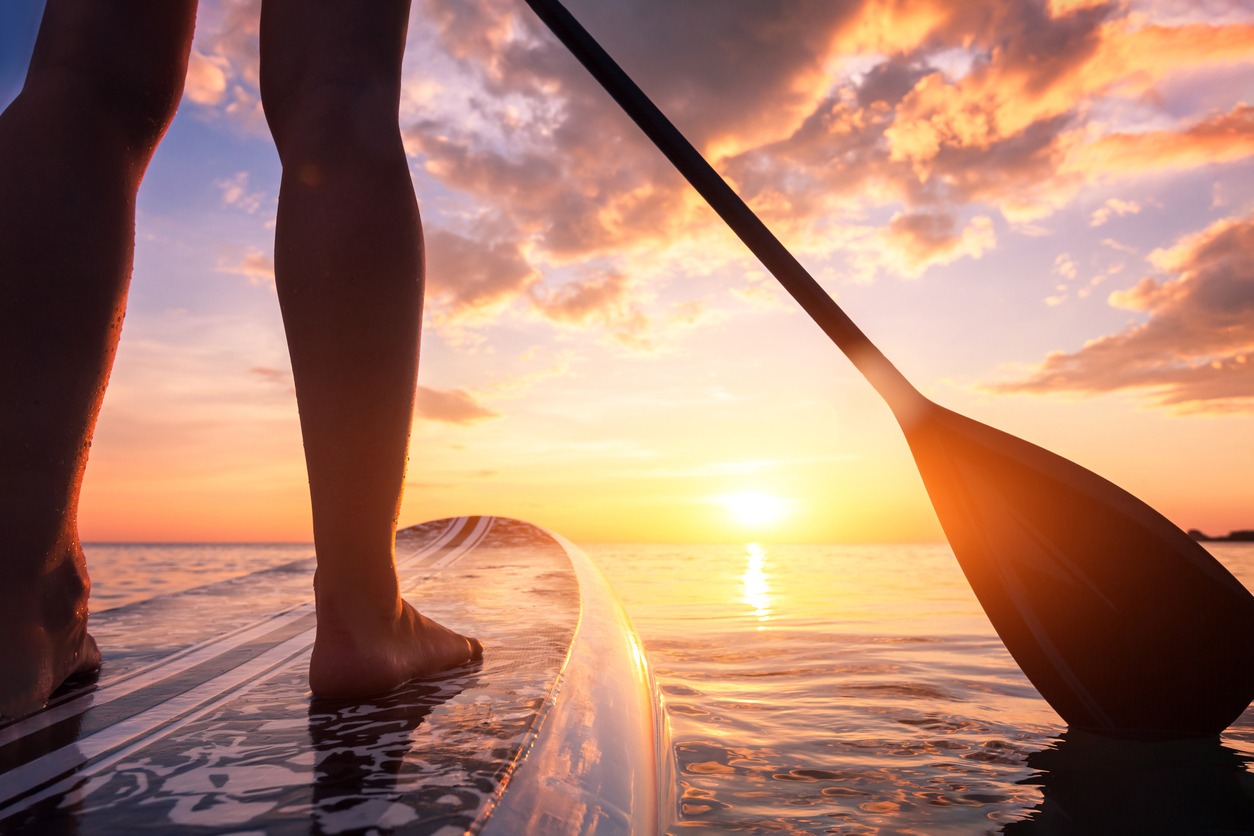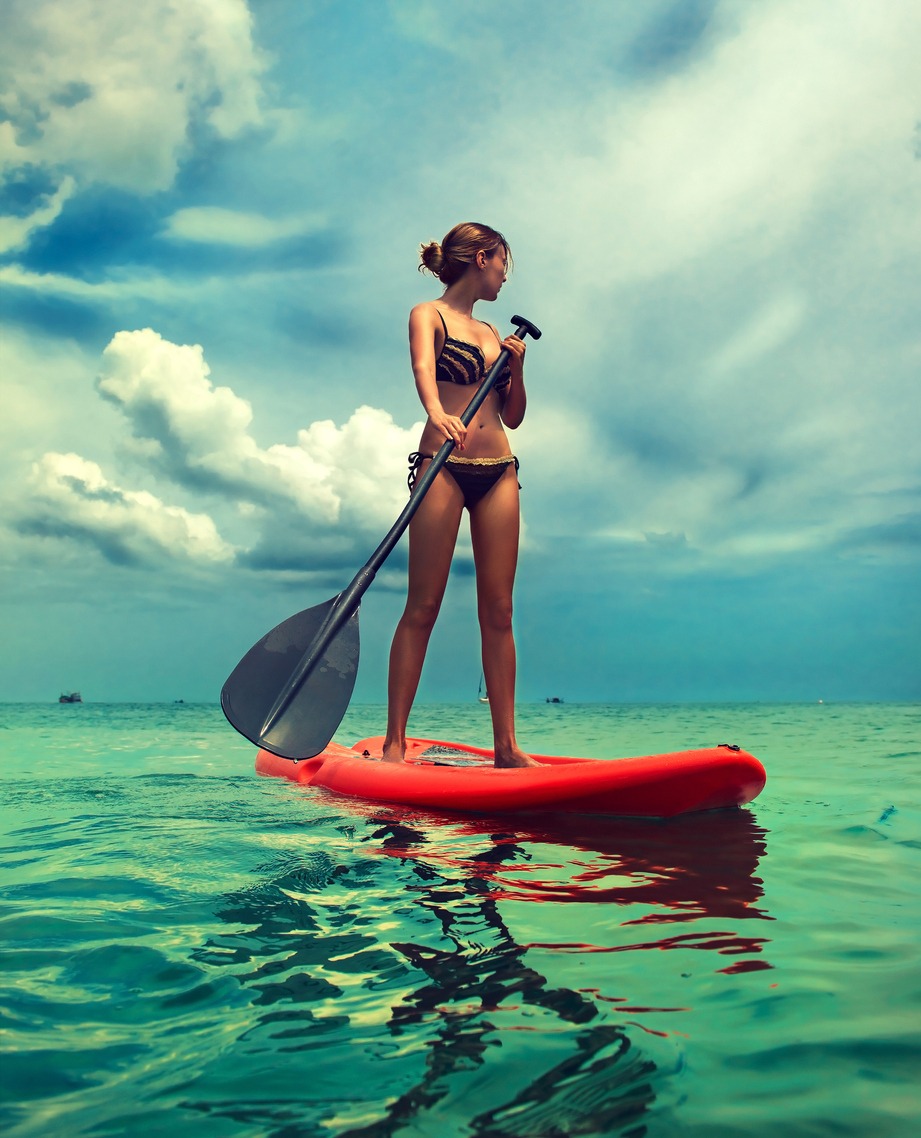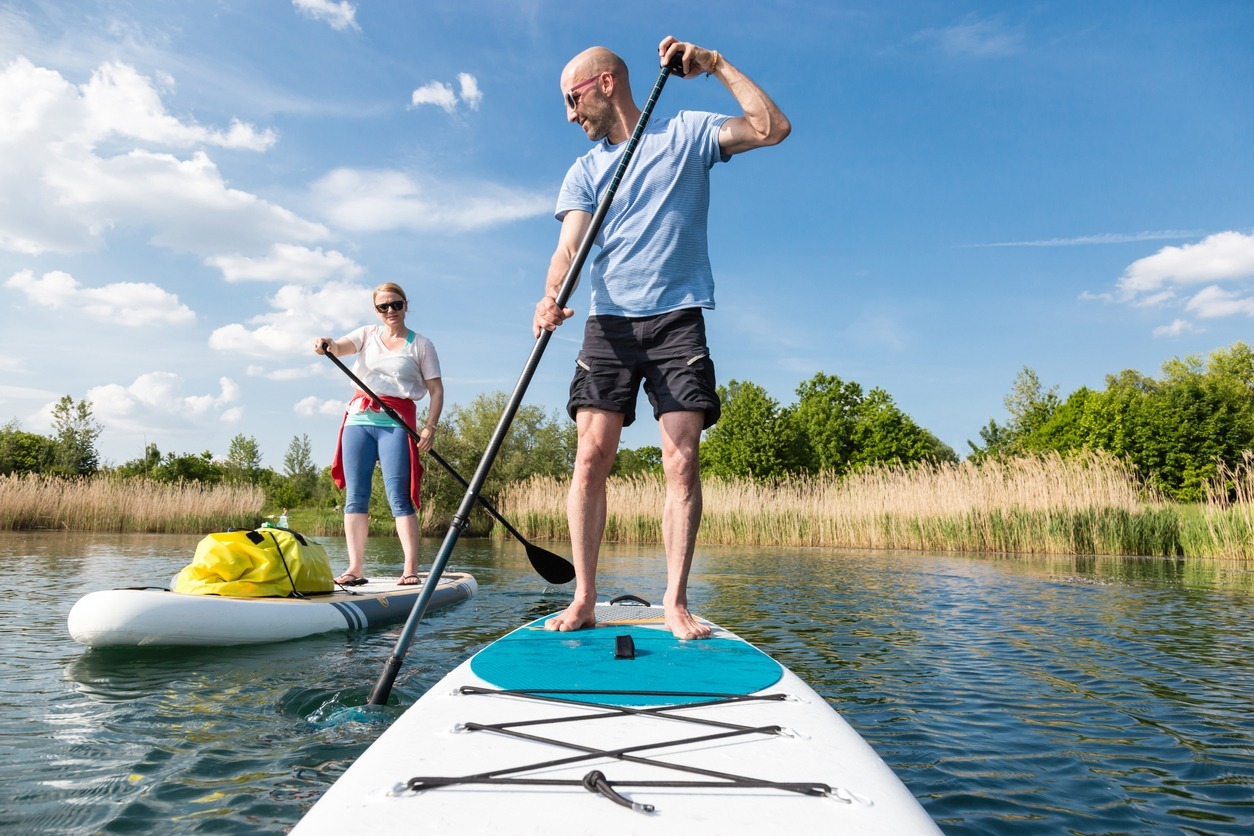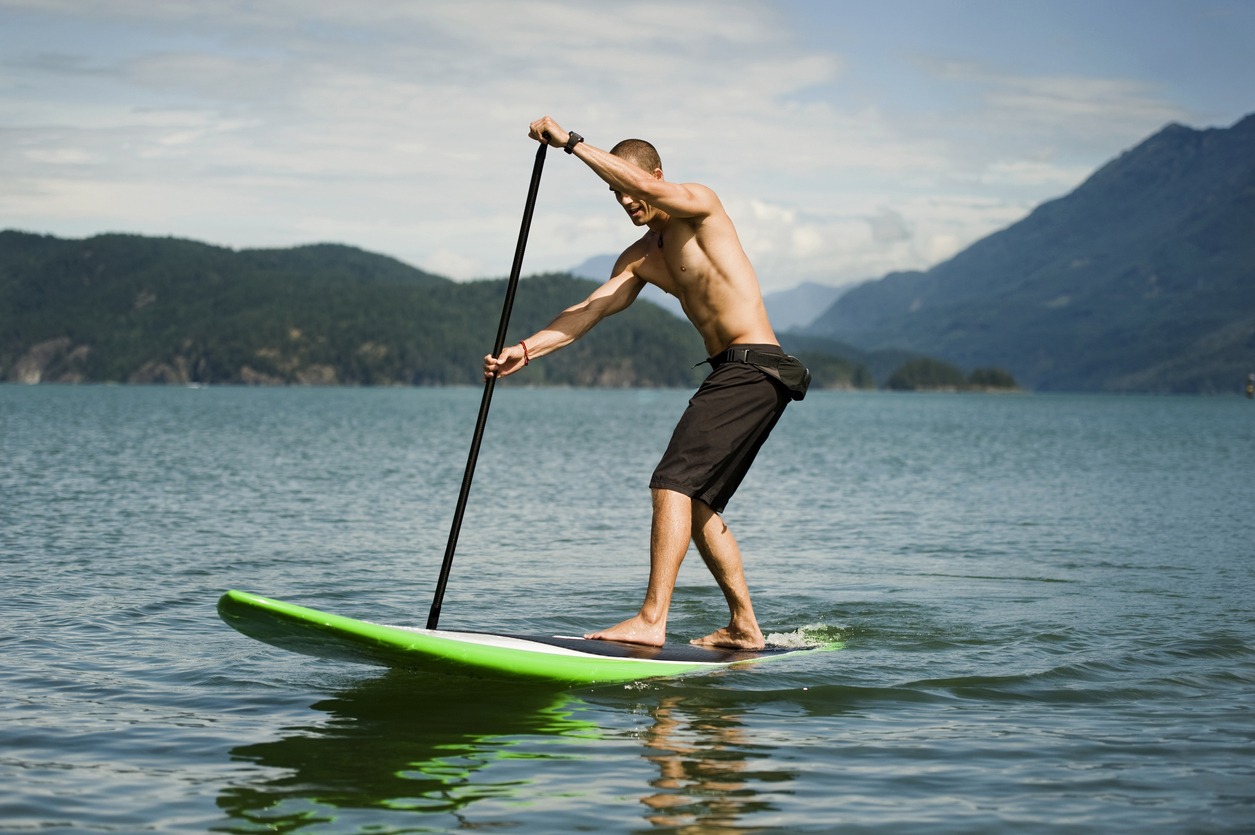When the sun is shining and the weather is excellent, there’s nothing like being in or around a body of water. And when swimming or strolling at the beach is a commonplace, standup paddleboarding (SUP) is something you might want to try.
While it may come as a shock to many, SUP is currently one of the fastest-growing sports worldwide. Over the past several years, paddleboarding has become popular as individuals worldwide are being exposed to the sport.
In this article, learn about the reasons why it can be a great sport for anyone.
What is Standup Paddleboarding?
Standup paddleboarding (SUP) is a sport that uses a surf-style board and a long paddle, making it a cross between surfing and canoeing. In SUP, the rider stands on the board floating on the water and uses a paddle to propel themselves through the water.
The sport was born from surfing with modern roots in Hawaii. In 2013, the sport was documented as the outdoor sporting activity with the most first-time participants in the United States.
What’s the Appeal of Standup Paddleboarding?
Standup paddleboarding is one of the newest water sports to gain widespread popularity, and there’s a good reason for it.
It’s accessible.
Unlike surfing, you can do paddleboarding in just about any body of water. While most adventurous paddleboarders might enjoy doing it in the ocean, it can be done in lakes, rivers, inland waterways, canals, and even large swimming pools. In short, you can do it anywhere there’s water you can paddle on.
Anyone can try it.
Standup paddleboarding is easier than you think. Beginner or advanced, young or old, seniors or kids – really anyone can try SUP. Most water sports need a level of experience, fitness, and some skill to be enjoyed, but paddleboarding doesn’t. And it’s easy to get going. All you need is to pop your board in the water, get on it and balance, and start paddling.
If you ever tried surfing and struggled, SUP would be a more leisurely sport to try. Paddleboards are designed for solidity and easier balance. If you’re someone who finds it hard to balance, the good news is you can take your time over building up to a standing position. You can paddle while on your knees and get the feel of the board and learn how to steer it first before trying to stand.
It’s a family-friendly activity.
Standup paddleboarding can be a fun activity to do with the family while you’re on vacation. Unlike other water sports where only the adults and the fit can safely try, this sport is friendly for any family member. You can pop your child in a life jacket on the end of your paddleboard while you stand and paddle around. If you have children who are old enough, they can try paddleboarding in shallow waters. It’s an incredibly easy water sport that children up to seniors would love. If you’re looking for a new bonding activity to try as a family, SUP is a wonderful choice!
It’s versatile.
Paddleboarding is versatile, as you can use it as a base for other activities like swimming, fishing, yoga, and pilates. Learning how to paddleboard will allow you to enjoy other fun activities on the water.
It’s an excellent full-body workout.
Whole-body workouts don’t get much better than SUP. It targets a number of different muscle groups: it works the core abdominal muscles, lower back muscles, obliques, lower back extensions, and muscles in the arms and legs. It’s also great for your cardiovascular health too. As you work to stay balanced on the board and propel yourself forward, you will work out your heart, lungs, core, legs, and arms as you involve your whole body in the workout.
SUP is a fun alternative to spending an afternoon in a gym if you’re trying to lose weight. It’s fantastic for burning fat, as you can end up burning 400 or more calories in an hour of paddleboarding. That’s a lot of calories for a low-impact exercise that has a low risk of injury and doesn’t put much strain on your muscles.
It’s good for your mental health.
Mentally, it offers an effective outlet for stress management. Bodies of water offer a relaxing effect, and water noises are associated with stress reduction.
Since it needs concentration to stay standing, SUP is an activity that can whisk your mind away from dwelling on any strains and stresses and into the present moment. Slowing down to the pace of the water allows your mind to slow down as well.
Plus, as with any form of exercise, it releases endorphins, which improve mood, reduce anxiety and help you sleep better. Therefore, regular standup paddleboarding sessions could boost your mood.
It’s an excellent activity for socializing.
Thanks to the great mass appeal of SUP, there are so many local paddling clubs, meet-ups, and events that make it easy to gain new friends while sightseeing on a paddleboarding tour. Whether you’re a water sports enthusiast, dog owner, fitness lover, or an advocate for ocean conservation – SUP can provide you outlets for meeting like-minded people who share your interests.
It’s affordable.
SUP is far from being a sport that’s only accessible to the wealthy. It’s an affordable activity that anyone can enjoy. You don’t need expensive airplane tickets, high-priced travel arrangements, or costly gear to try SUP. You can always rent a board and paddle in any standup paddleboarding area, or you can use inflatable paddle boards that are a fraction of the price of rigid boards. Unlike with other sports, you don’t need to rent or use a boat, and you don’t need any special equipment so you can travel with it.
How to Get Started in Standup Paddleboarding
While you can simply go to a shop or buy the cheapest SUP they have, it isn’t the most effective way to get started in standup paddleboarding. For anyone wishing to learn how to SUP, it’s best to go to your local SUP shop, take some lessons, and rent gear a couple of times. Get a feel of different boards first before investing in one, so you can see what you like best. Ask the shop about applying any rental fees to buying a new paddleboard. Also, don’t be afraid to buy used equipment to start out.
When it comes to buying a paddleboard, consider the following specs of the board:
- Weight
- Capacity
- Size
- Volume
Anyone at the paddleboard shop can help you find the right board that’s appropriate for your size and level. If you need to know more about the basics of the sport, check out this introduction to standup paddleboarding.








